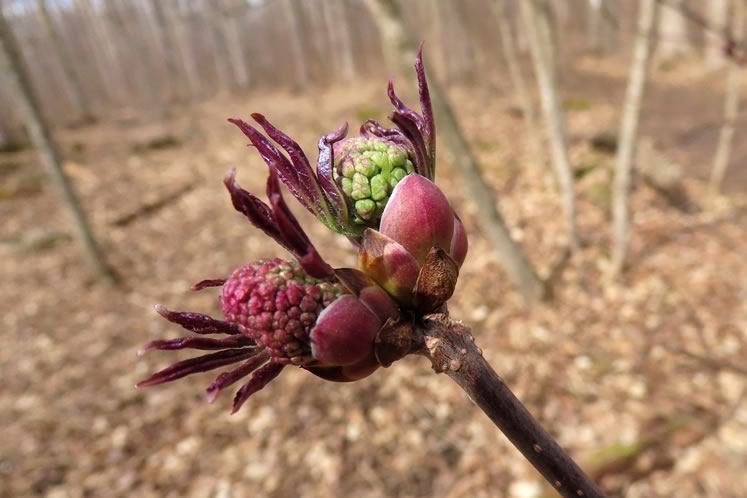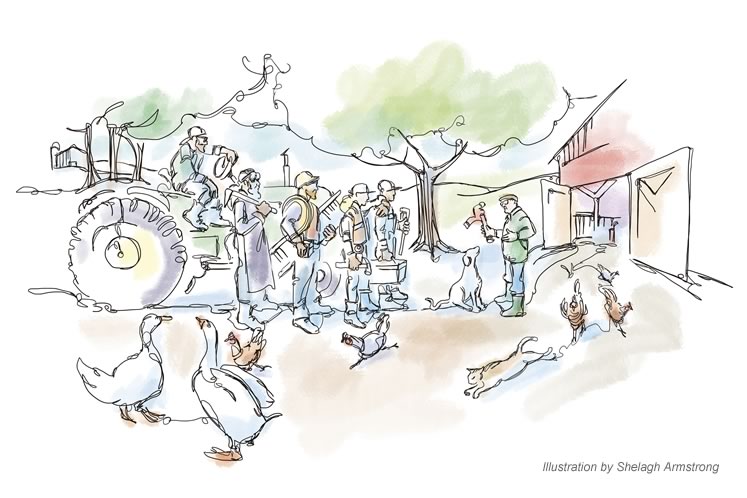Letters – Our Readers Write: Summer 2021
Letters published in the Summer 2021 edition of In The Hills magazine.
Erin wastewater plant opposition
I believe the town of Erin needs a wastewater treatment plant, but not the one proposed by the town and its consultants [as mentioned in Nicola Ross’s “No Conservation, No Authority” spring ’21]. The Environmental Study Report scope was too narrow, despite biologists’ expressed concerns and as a result there was inadequate consideration of the expanded population growth of Erin and the toll it will take on the West Credit River’s downstream aquatic ecosystem and human communities.
This is NOT a “fish or people” issue.
This appears to be planning by wastewater treatment plant approach and not a proper planning process for reasonable community growth or its important and fragile environment. It needs a watershed approach as demonstrated by the provincial government as far back as the late 1980s with the development of the watershed planning process.
Southern Ontario has lost more than 80 per cent of its resident brook trout populations over the last 70 years (according to reports by the Ontario Ministry of Natural Resources and Forestry). And the brook trout and redside dace populations of the Credit are slim in general and only healthy in this small sub-watershed.
We should not be destroying the last remaining healthy sub-watershed for expediency. This small watershed and its human community deserve better.
It is essential an independent federal assessment of the Erin Wastewater Treatment Plant be conducted to ensure the health of downstream communities and survival of the last healthy brook trout and redside dace populations left in the Credit River watershed.
Jack Imhof, Aquatic ecologist/watershed scientist (retired)
Editor’s note: On May 26, 2021, the federal government announced its decision not to undertake a new assessment of the Erin Wastewater Treatment Plant.

Brook trout in a Caledon stream. Photo by Don Scallen.
The town of Erin has ambitious plans to grow its population from 4,500 to 18,900. This growth will include numerous new housing developments with significant cumulative effects, and a wastewater treatment plant discharging 7.2 million litres of treated effluent daily into West Credit River brook trout habitat.
The town of Erin and provincial regulators all agreed that the most productive brook trout spawning areas and the best brook trout populations are located downstream of Erin Village, and that the longest contiguous brook trout habitat in the Credit River watershed is between Erin and Belfountain. In fact, the number of redds [spawning grounds or nests] within the proposed effluent mixing zone and within reach of dissolved oxygen sag [nearby waters with a reduced oxygen content] were evaluated in the Environmental Study Report, which reported that they were extremely abundant in the study reach.
Brook trout survival depends on their coldwater habitat, yet the approved ESR failed to require temperature limits and design objectives in this warming climate. Brook trout will also face a toxic plume of chloride, ammonia and reduced dissolved oxygen that could extend up to 700 metres downstream before fully mixing. As stream temperature increases, ammonia toxicity will increase and available oxygen will decrease.
The Coalition for the West Credit River conducted a thorough review of the ESR and found numerous areas lacking due diligence in addressing critical factors that, if left unchecked, will have deadly consequences for brook trout in the West Credit River.
Judy Mabee, President, Belfountain Community Organization. Chair, Coalition for the West Credit River
Great job by Nicola Ross in your spring issue. Ms. Ross quotes the mayor of Erin, “If you don’t grow, you die.” I agree with him, conversely, as what will die (in my opinion) with the proposed growth in Erin will be the temperature-sensitive brook trout in the West Credit River.
Also what will die is Erin’s small-town charm as we get paved over with subdivisions, strip malls and box stores. I have been in the area these past seven decades and have lived in Erin these past 42 years. I am an avid hiker, outdoorsman and fisherman.
How the Credit Valley Conservation Authority and the Ministry of the Environment, Conservation and Parks approved this atrocity is beyond my realm of thinking. The proposed sewage treatment plant location would be a beautiful place for a baseball diamond, sports field and hiking and bicycle trails. That is the welcome mat that I would like to see as you drive into Erin, not this abomination.
Ken Cowling, Erin
Among other disasters waiting to happen, what will the effect be on water levels? This river was never intended to accept millions of litres of water 24/7. Will we experience flooding? To those living right on the river, I would be concerned. To those of us living a little farther back, should we be concerned about flooding on Forks of the Credit Road?
Whose decision was it to pump from the sewage plant directly into the West Credit River? Who is allowing this huge development to be tacked onto Erin? Why is all this going on in the middle of a pandemic? I wonder what UNESCO would have to say since they declared this area a World Biosphere Reserve.
Marion Lucas, Caledon
The Ontario Federation of Anglers and Hunters, Ontario’s largest, nonprofit, fish and wildlife conservation-based organization, supported the request by the Coalition for the West Credit for a federal assessment of Erin’s proposed wastewater treatment plant.
The OFAH has multiple interests in the Credit River, including restoration of extirpated Atlantic salmon to the watershed, our members’ interest in brook trout, and our history in brook trout management across the province. The OFAH is not opposed to sustainable development, but we take seriously the impacts to fish habitat of such development, and we believe infrastructure proposals should be focused on minimizing their impacts on sensitive and flagship species and habitats.
Not enough consideration was given to the many consequences of increased water temperature on brook trout, and their vulnerability to extreme events. These extremes were not modelled during the planning process, and we live in a time of climate extremes.
Chris Robinson, Conservation Programs Manager, Ontario Federation of Anglers and Hunters

Vintage car enthusiasm
I love the CCM Russell automobile advertisement from 1914, included in the article “Natural Enemies: Horse vs Automobile” by Ken Weber [autumn ’08]. The car as pictured is stored in my garage. It is actually the used car advertised in the bottom paragraph of the ad, the Russell Model R. Mine is 1910, but I paid much more than $900 to buy it used.
Sandra Hoffman, B.C.
Ken Weber replies: I found the ad in a local weekly newspaper while doing research for the piece, and really know nothing more about it. It appears you have a gem in your collection. My uncle had one (c. mid-1940s), but I have no idea what happened to it. My own first car at age 16 in 1956 was a 1938 Oldsmobile coupe. It had a truck transmission, the clutch slipped, and the frame was bent, so to steer it required both hands on one side of the steering wheel. That’s probably why it cost just $30!
Editor’s note: See Ken Weber’s “Historic Hills” column, page 96, for more on the history of the automobile in our hills.

Community help goes online
I just wanted to reach out with my thanks to writer Johanna Bernhardt (and the CPCC EarlyON team) for your very thorough, accurate and thoughtful article in the spring issue [“It Takes a Virtual Village” spring ’21]. We are very grateful for your support and wanted to send our thanks to the whole In The Hills team for all you do to share news and information with Caledon/Dufferin/Headwaters residents.
Shelly Sargent, Manager, Community Relations & Volunteers, Caledon Parent-Child Centre

Red elderberry flower buds. Photo by Don Scallen.
A spring blog fan – and flash from the past!
A great “Notes from the Wild” blog by Don Scallen about the turning of the season, accompanied with fantastic images of spring! [“Life Renewed” April 12, 2021] It’s awesome seeing my Grade 6 science teacher continuing to share his love for nature through his blogs. You’ve got yourself an inspired old student here, Mr. Scallen.
Dhruv Patel, Brampton

More country advice for city dwellers
Thank you for the “Who You Gonna Call?” confessions from Dan Needles [spring ’21]. What Dan writes is true. We moved from downtown Toronto decades ago, from a postage stamp lot just off Avenue Road to 250 acres. Here are some additional things that city dwellers need to consider:
- When a tree falls, it is yours.
- Lighting does strike numerous times, until it hits the well and blows the pump out.
- Water does freeze pipes in the middle of winter.
- Turkeys are everywhere, not just on the road.
- Things get returned eventually, including the old cast-iron well hand pump from the 1800s.
Sarah Carvalho, East Garafraxa
Feeling the love
I grew up in Georgetown and have relatives and friends in the Orangeville area, and I really enjoy your excellent articles and photography. It almost makes me want to move back to Ontario. Oh, but then there’s winter…
Anyway, I just wanted to let you know that you’ve got a fan here. Thanks!
Mary Lynn Machado, B.C.
Thank you to all the people who make such a fine, informative, heartwarming, inspiring magazine possible. And have for decades. Still improving despite problems of various kinds. Bravo! No wonder it’s so well loved and popular. It has become part of our lives.
Erika Hildebrand, Mulmur
Online In The Hills
We welcome your comments! For more commentary from our readers, or to add your own thoughts on any of the stories, please add a comment at the bottom of any article. You can also send your letters by e-mail to [email protected] or use our handy submission form. Please include your name, address and contact information. In the Hills reserves the right to edit letters for publication.






